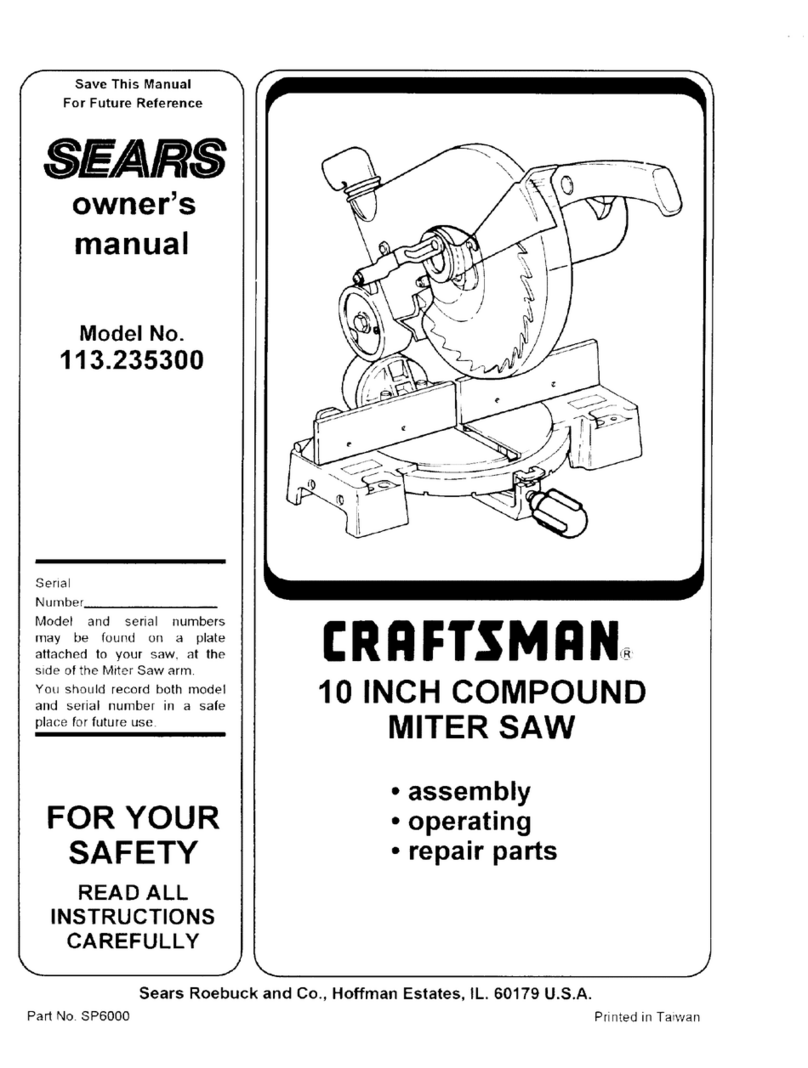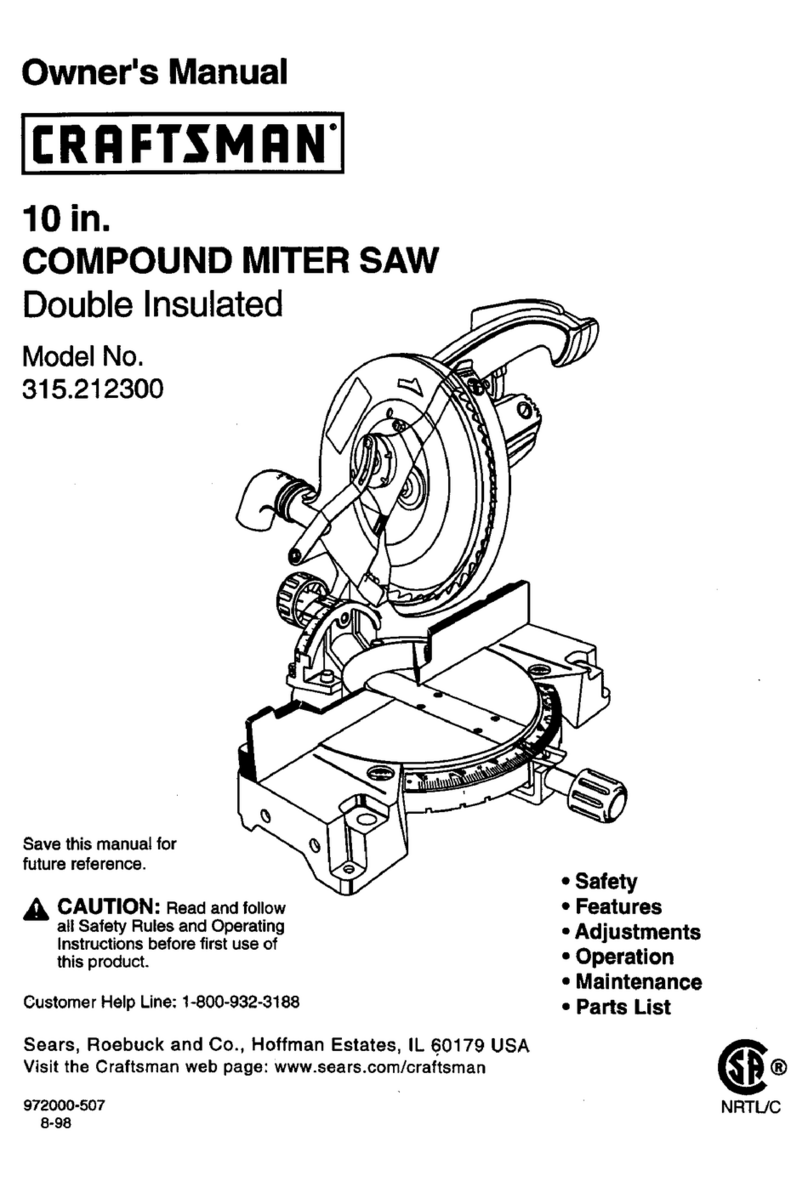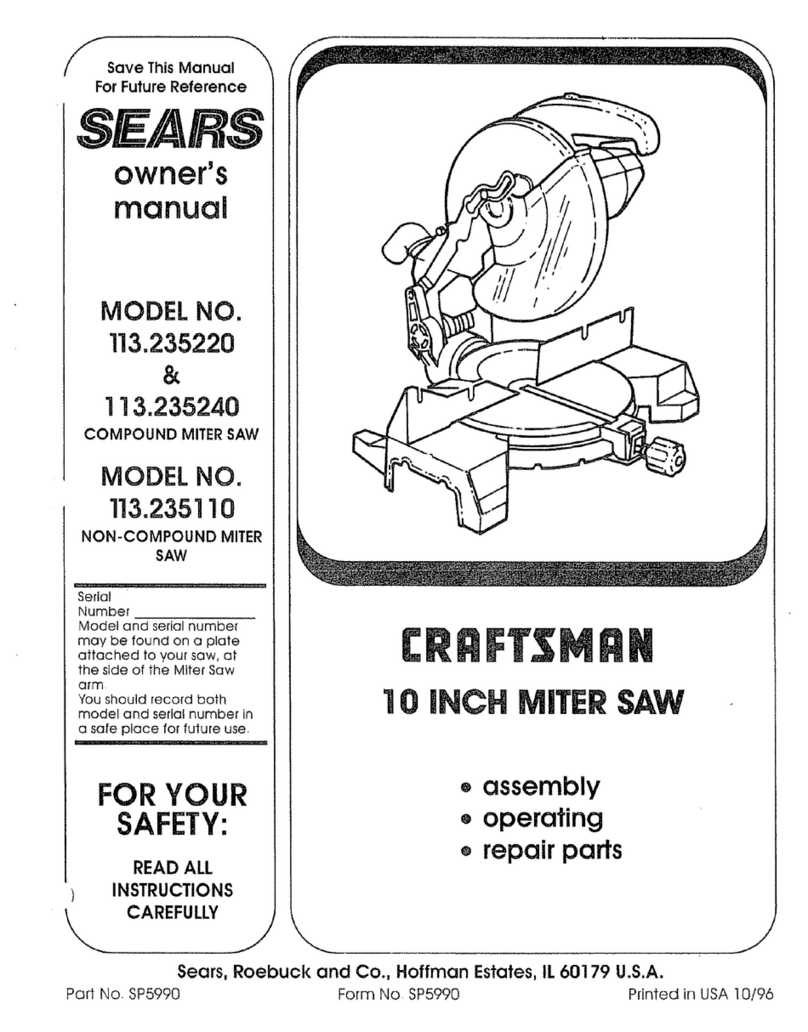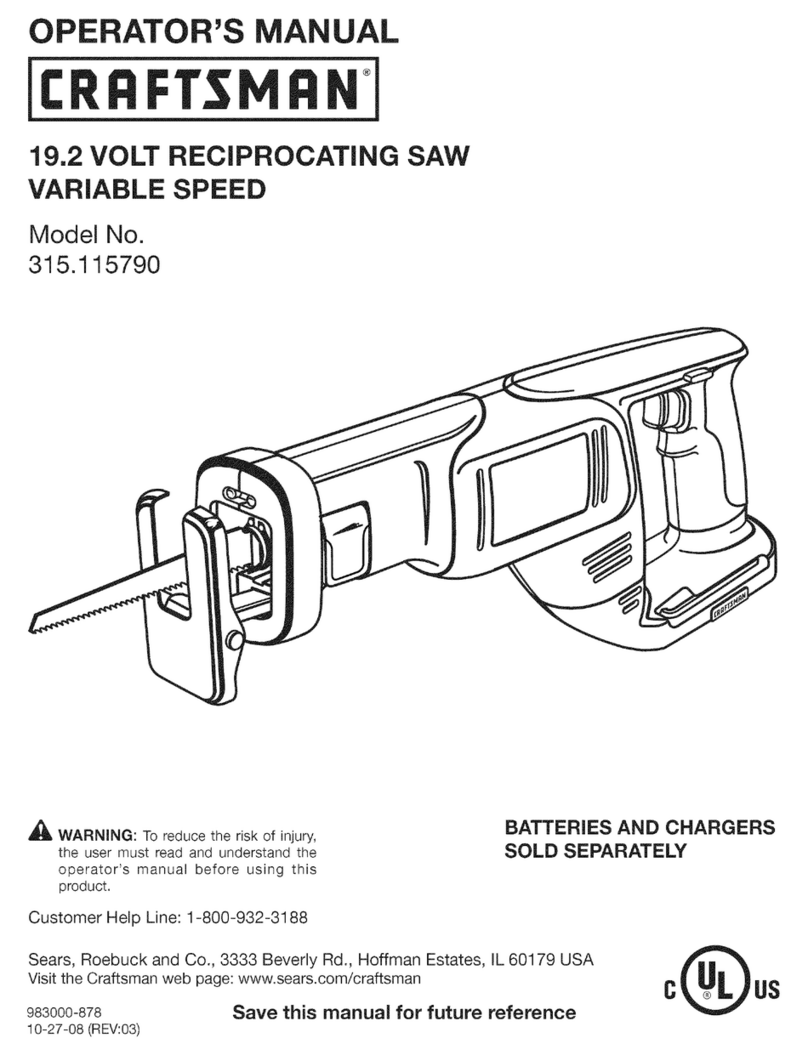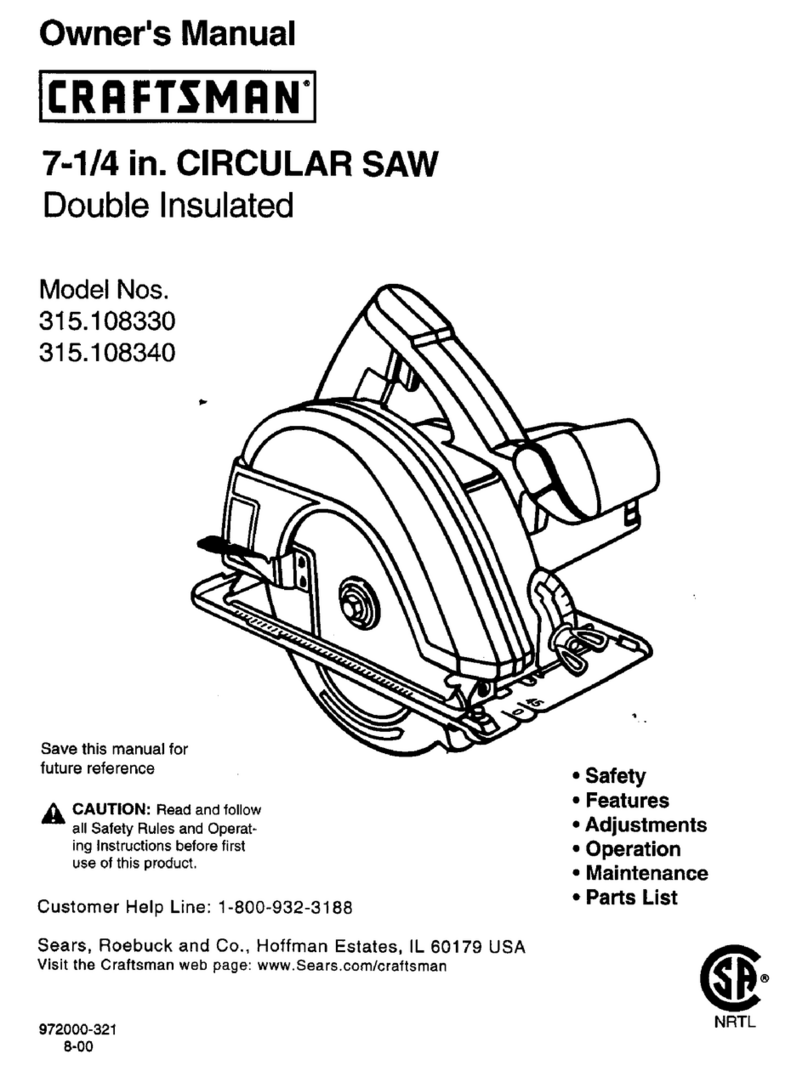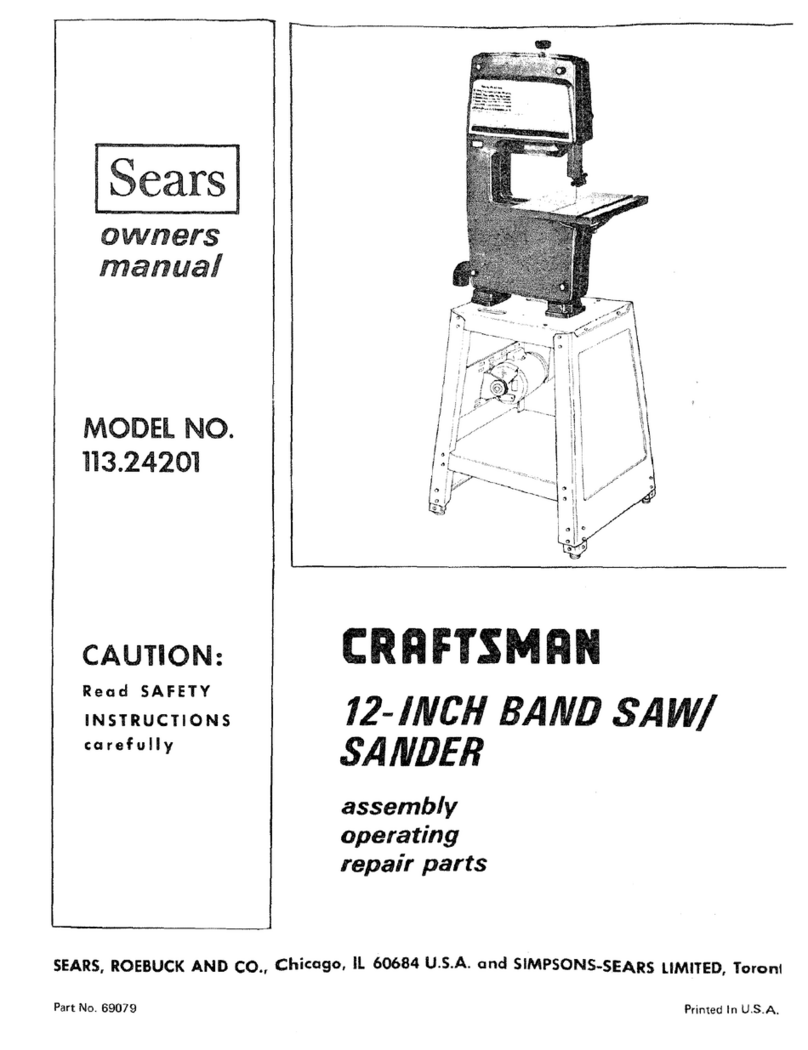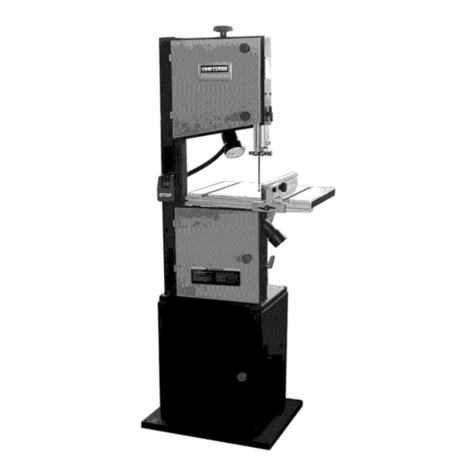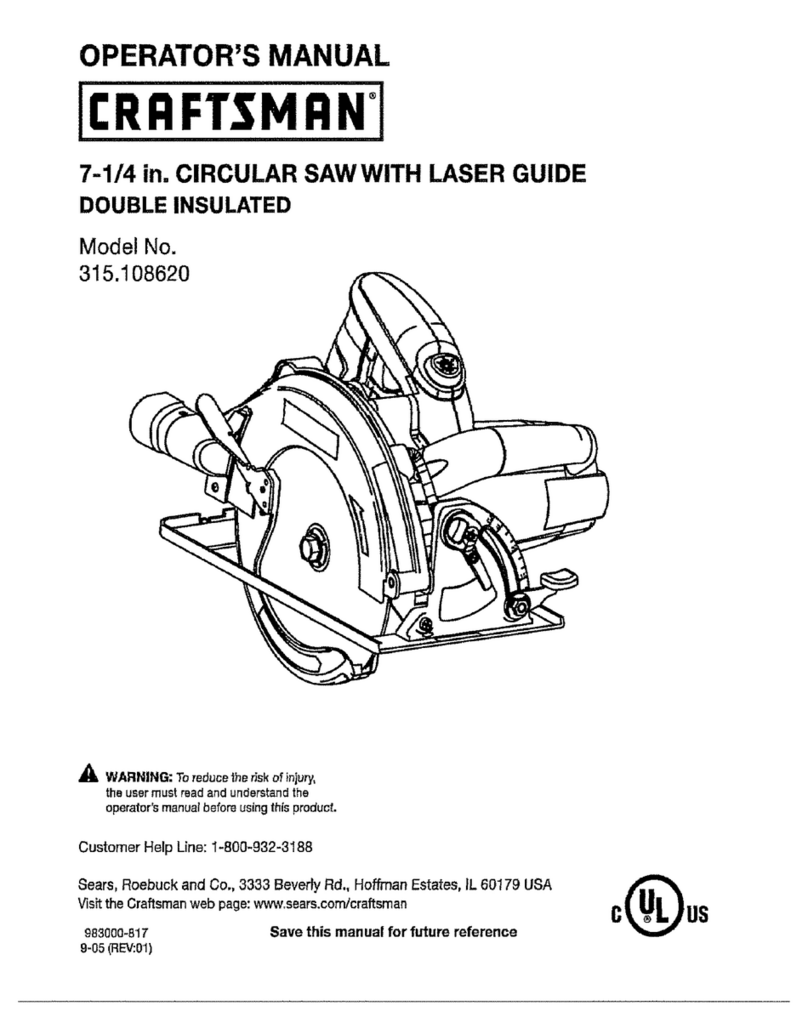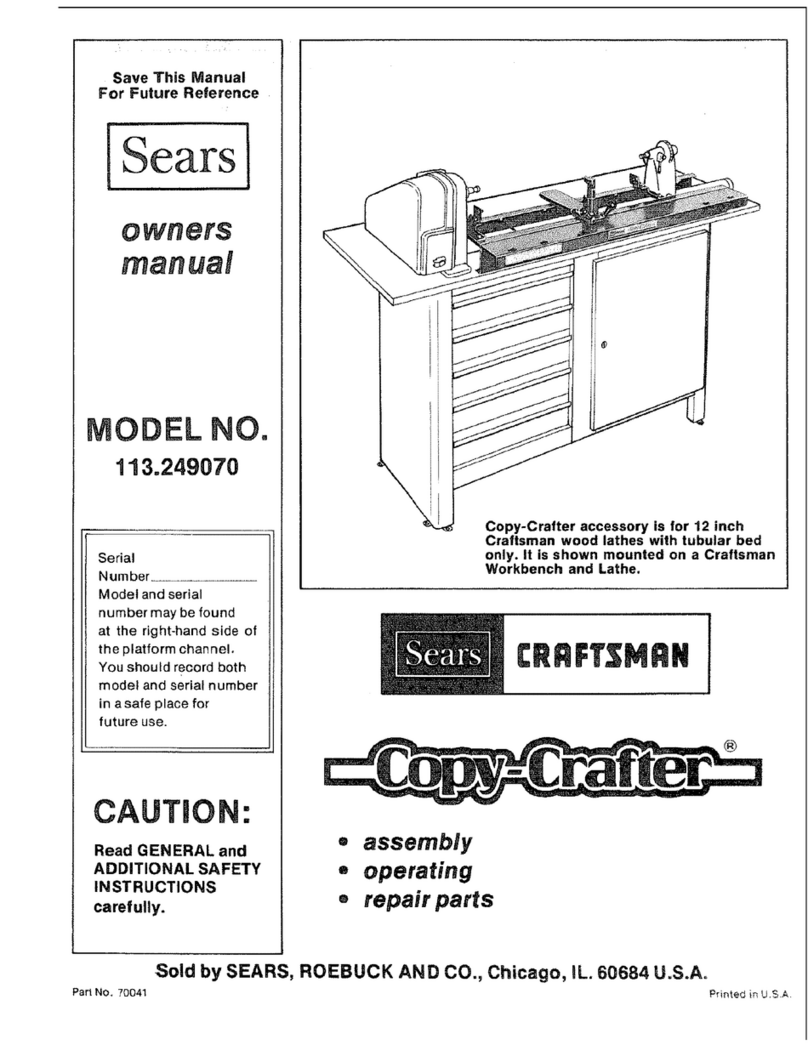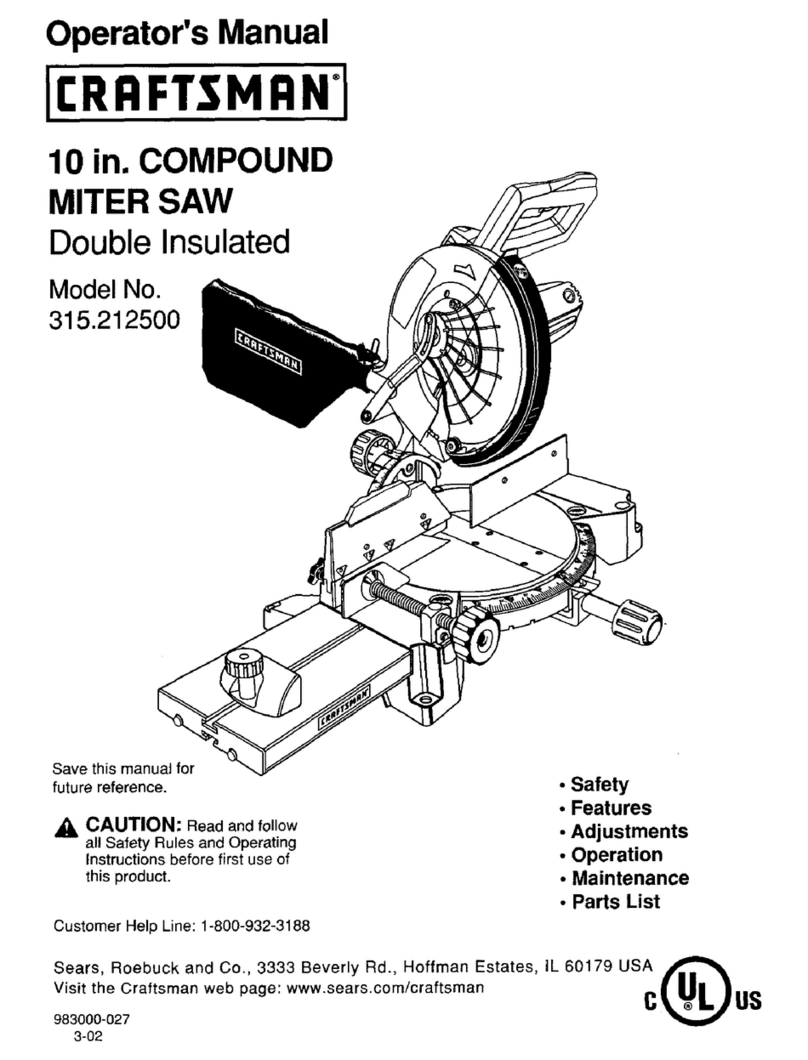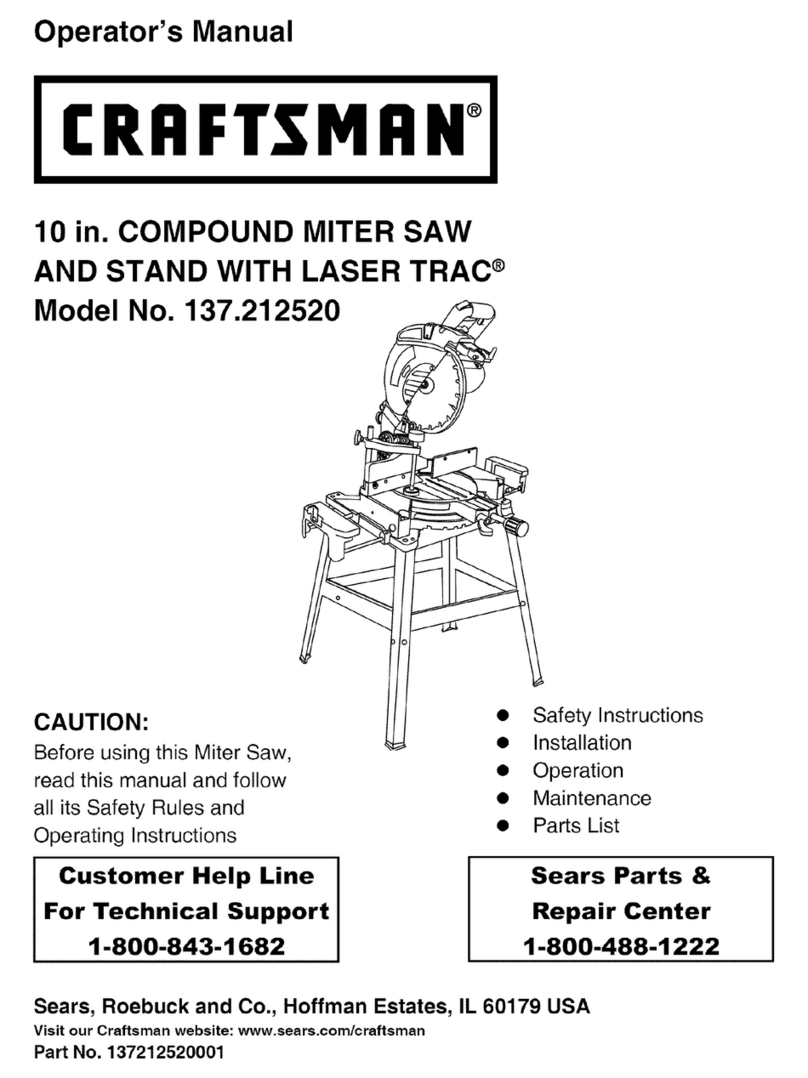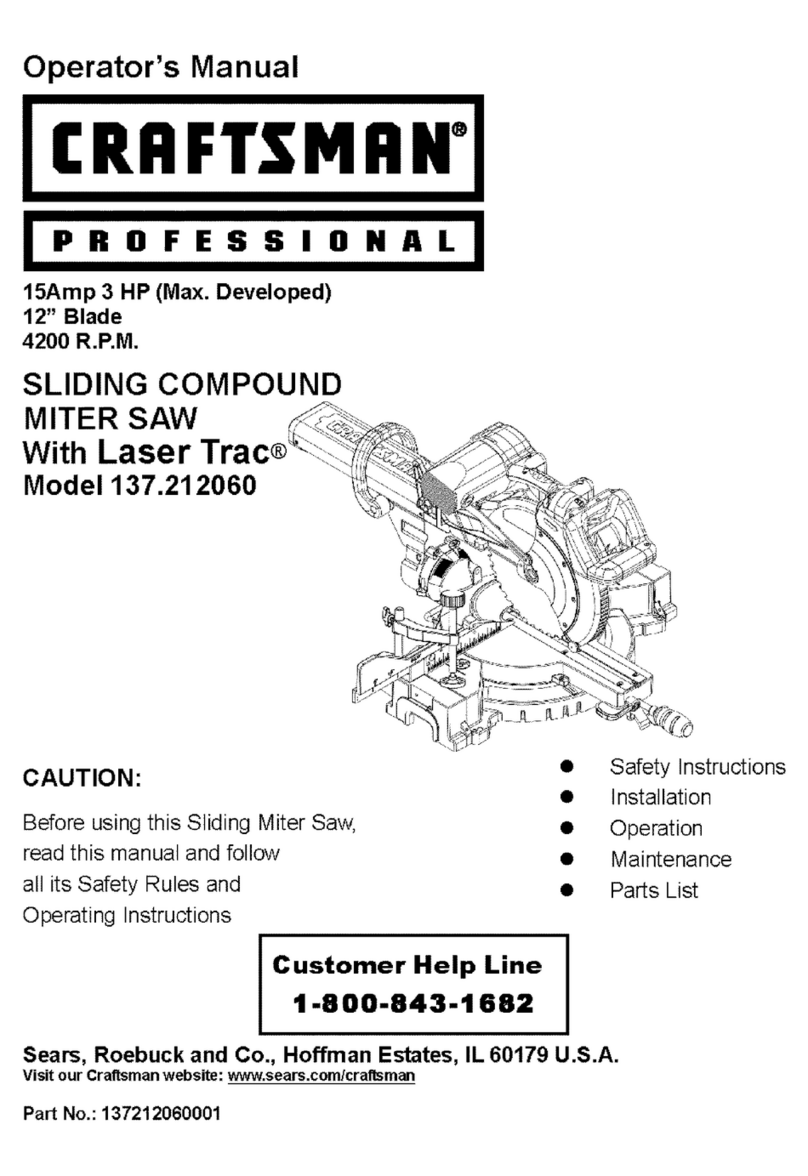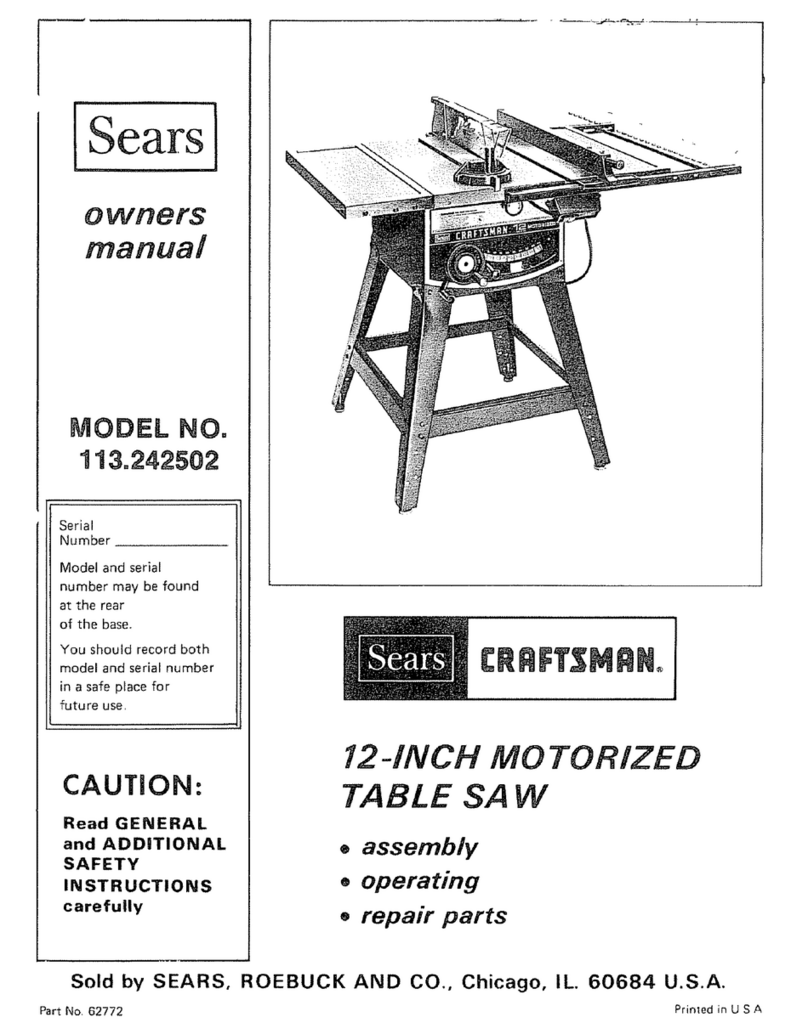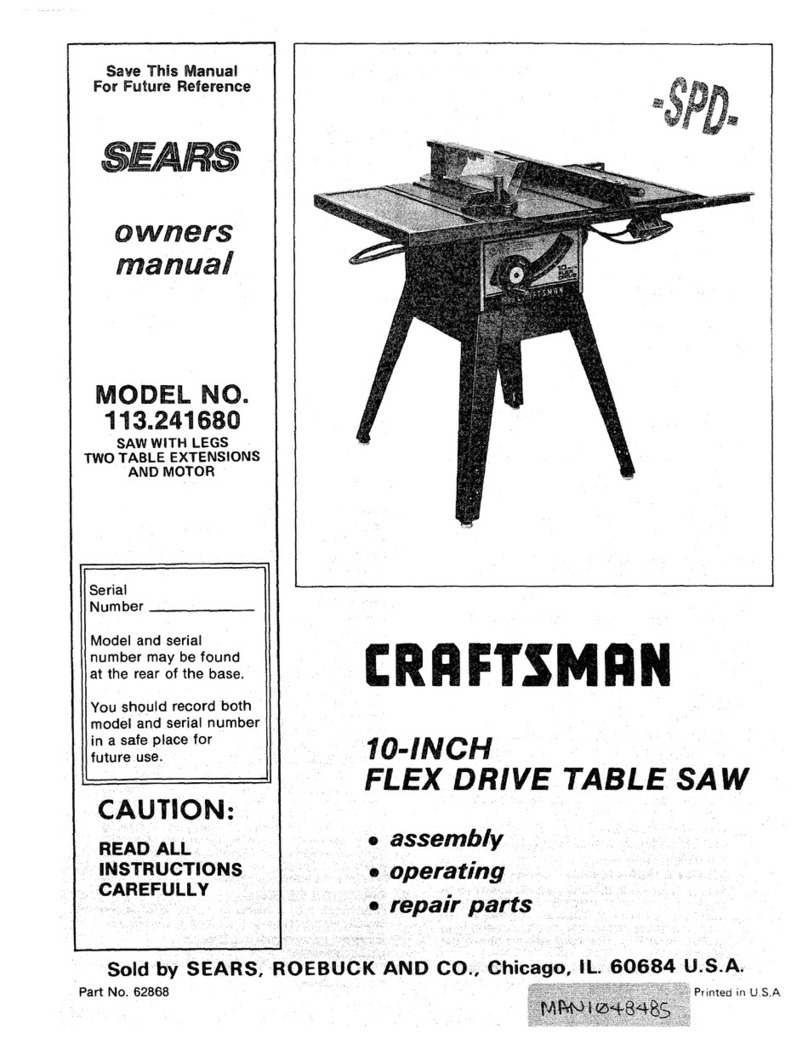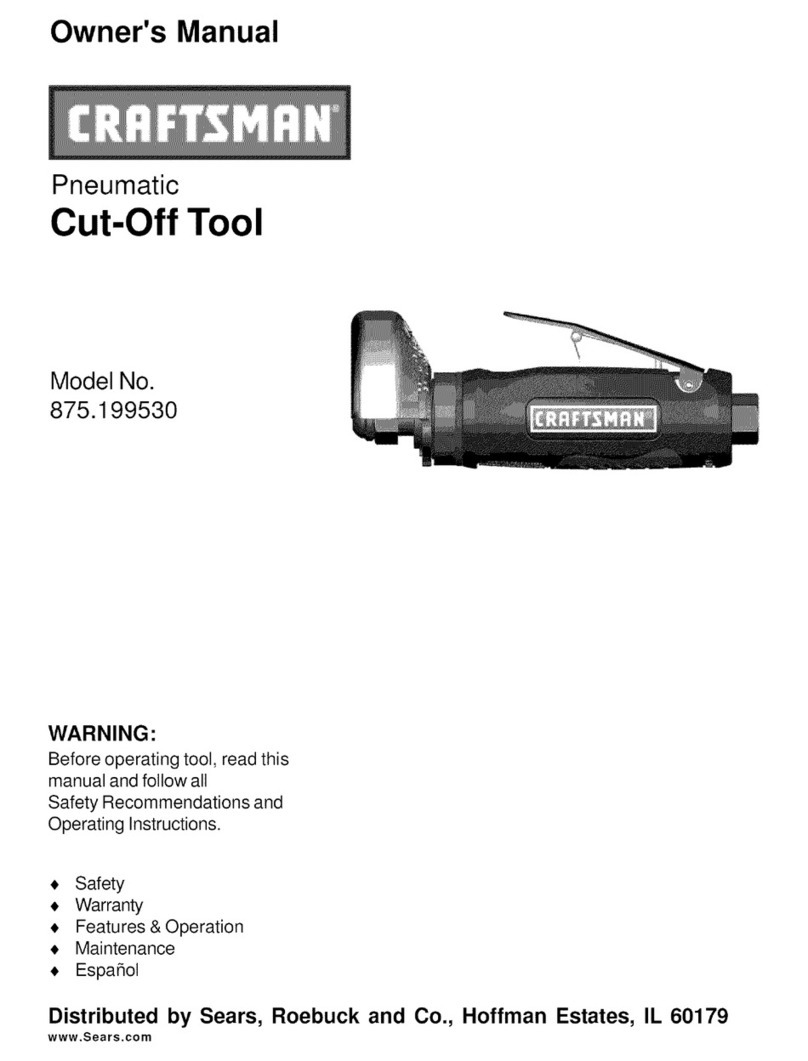ATTACH RIP FENCE
Refer to Figure 9,
o Rip fence (Key No 19) rides in the slot of table (Key
No_1).
• Slide rip fence into slot
a Hold rip fence to table and fasten by threading knob
(Key No,,20) into rip fence°
- Rip fence can be repositioned by loosening knob
ATTACH GUIDE LOCKING KNOB
Refer to Figure 8.
= Slide 5A,"flat washer (Key No, 37) on hex head bolt
(Key No. 32),
* Tighten knob (Key No,.30) on to hex head bolt
ALIGN TABLE
Refe_ to Figure 9,
The table must be aligned properly so that the blade
is at a right angle to the table and that the rip fence
is aligned with the blade,
. Lock the table in the horizontal position, Mount the
rip fence on the table_Slide the dp fence next to, but
not touching, the blade,, Lock the rip fence,
• Check that the blade is aligned parallel with the rip
fence,, If the blade and fence are not parallel, loosen
knobs (Key Nos. 12 and 13) on the trunnions (Key
Nos. 2 and 5), Adjust the table position so that the
blade and rip fence are parallel Secure the table
position by tightening the knobs
. After assembly, the table has to be aligned in order
to have the blade running through the center of the
slot in the table insert.
• To move table sideways, loosen the four socket head
bolts (Key No. 3) that secure the trunnions to the
table. Move table to left or right until blade runs
through the center of slot. Tighten bolts and make
sure that table stays in position while bolts are being
tightened,
MOUNT MOTOR
Refer to Figure 6,
=Mount motor to motor mount plate (Key No, 9) using
carriage bolts, lock washers, and hex nuts provided
(Key Nos, 19, 21 and 22).
° Finger tighten hex nuts. Motor will need to be reposi-
tioned to obtain proper' V-belt tension.
WIRE MOTOR
Refer to Figures 2 and 6.,
The motor should be wired for 115 volts and counter-
clockwise rotation as viewed from shaft end of motor. A
schematic supplied with motor will describe proper
wiring procedures. Be sure to wire motor for counter-
clockwise rotation facing shaft end,
Remove thin hex nut from strain relief. Insert strain
relief into 7/£,,knockout in shaft side of motor connection
box, Secure with thin hex nut..Pass motor cord through
Blue
Black t
Orange
Red
White t
Yellow
Figure 2 - Wiring Schematic
115 Volts
strain relief. Secure motor cord by tightening thick hex
nut Connect and insulate wires properly using wire
nuts provided. Wire motor to rnotor cord using the
schematic shown in Figure 2
WARNING: All electrical connections must be per-
formed by a qualified electrician..
GROUND MOTOR
Green wire of motor cord and serrated washer must be
connected to motor body. Remove green grounding
screw located in connection box of motor_ Position
green wire ring terminal onto grounding screw and ser-
rated washer next to ring terminal, Secure serrated
washer and green wire in motor cord to motor body
NOTE: Be sure that the serrated washer is secured
directly in contact with motor body.
INSTALL MOTOR PULLEY
Refer-to Figure 10.
• Slide motor pulley (Key No,,26) onto motor shaft with
key in motor shaft groove and motor pulley keyway,,
o Use straightedge across outer surface of both motor
and idler pulley (Key No, 23) to make sure motor pul-
ley and idler pulley are parallel,
° If the motor pulley and idler pulley are not parallel,
the band saw may develop excessive vibration,,
Reposition motor if necessary,
. When pulleys are aligned, secure the position of the
motor pulley with set screw (Key Nov27),,
INSTALL V-BELT
Refer to Figures 5, 6 and 10_
= Band saw uses a step-pulley drive system to provide
a selection of blade speeds,
oLoosen hex head bolt and hex nut (Figure 6, Key
Nos,. 11 and 14)Place V-belt (Figure 9, Key No 25)
on idler pulley and motor pulley (Figure 9, Key Nos.
23 and 26) with ",/-belt in desired location on pu!leys
(See Figure 5, Blade Speeds, page 8)
• Do not over tighten V-belts. Excessive tension on V-
belt will reduce life of belt, Belt is properly tensioned
when light pressure applied to midpoint of the belt
produces about Y2"deflection.
• Tension V-belt by pushing down on motor mount
plate and tightening hex head bolt and hex nut,
4
